|
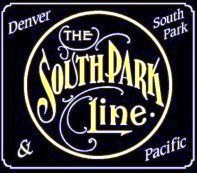  DENVER, SOUTH PARK and PACIFIC RAILROAD DENVER, SOUTH PARK and PACIFIC RAILROAD
DSP&P
Pullman Palace Sleeping Cars
Pullman Palace
sleeping cars
South Park, Bonanza, Leadville, and San Juan were built according to Pullman’s plan 73. They
were assembled at DSP&P Shops in Denver in October 1879. Pullman
cars Hortense and Kenosha were assigned to the DSP&P in September
1882. These were built to a modified plan 73A. DSP&P coach #5, built
in 1878 by Barney and Smith, also carried the name "Leadville" for a
short time.
These cars were not
owned by the railway, but were operated under contract with Pullman.
As a result, they carried no DSP&P road numbers and did not
suffer from the numerous renumbering schemes that afflicted all
other rolling stock on the DSP&P.
Both
plans had 10 pairs of facing seats, five down each side. Each
pair made up into a lower berth, and had an upper berth
that swung down from the ceiling. Since they were “open”
Pullmans, there was no permanent wall between the sections. At night,
heavy curtains closed off each section from the
aisle and adjacent sections. At one end was a ladies’
restroom, linen closet and heater, and at the other was a men’s
restroom and lavatory.
On
Plan 73 cars, each sleeping section had two pairs of
windows, and each end section had a pair of windows. From the
outside, the cars thus had seven evenly-spaced pairs of
windows. On plan 73A cars, there was only one window in the end
sections, centered where the pair was located on the Plan 73 cars.
The exterior of the cars was described as "maroon" or "dark plum" in colour.
The car body was eighteen inches narrower than those built
for standard gauge, and the aisle and seats in proportion. The berths were
also smaller, and were intended to hold one
person.
Sources:
MidContinent Museum DSP&P Passenger Car
Pages
|
DSP&P |
U.P.
1885 |
DL&G
1889 |
C&S
1899 |
C&S
1906 |
|
Pullman
South Park |
South Park |
Coach
#176 |
Business #B-1 |
#910 |
|
Pullman Bonanza |
Bonanza |
Coach
#177 |
Coach
#146 / Coach-RPO #116 |
#41 |
|
Pullman Leadville |
Leadville |
Coach
#179 |
Coach
#148 /Coach-RPO #118 |
#43 |
|
Pullman San Juan |
Burned
1891 |
Gone |
Gone |
Gone |
|
Pullman Hortense |
Hortense |
Sold - Mexico |
Gone |
Gone |
|
Pullman Kenosha |
Kenosha |
Sold - Mexico |
Gone |
Gone |
|
Car Type |
Pullman Palace Sleeper |
|
Built by |
Pullman |
|
Date
Assigned |
October
1879 |
|
Cost |
$8,500 |
|
Length
Over Endsills (1916) |
42'-5" |
|
Length
Over Buffers (1916) |
50'-5" |
|
Truck
Centers (1916) |
30'-5" |
|
Truck
Wheelbase (1916) |
N.G. |
6'-0" |
|
S.G. |
7'-0" |
|
Width |
1885 |
8'-4" |
|
1916 |
8'-2" |
|
Weight |
ca. 1885 |
15 tons
as sleeper |
|
1912 |
27 tons
as business car |
|
1916 |
53,300
lbs. |
|
Wheel
Size |
1885 |
30"
“paper” |
|
1916 N.G. |
30" |
|
1916 S.G. |
36" |
|
Heating |
Baker
Heater |
|
Lighting |
1885 |
Oil lamps |
|
1916 |
Pintsch
Gas |
|
Interior
Finish |
Sleeper
(1879) |
Mahogany,
burl, prima vera (white wood), amaranth, ebony, and
rosewood |
|
Business
Car (1916) |
Mahogany
with green plush upholstery |
|
Platform
Roof |
Bullnose |
|
Termination Date |
1929 --
1939 |
 HISTORY HISTORY
Pullman Palace
car "South Park" was the first of four cars built in late 1879. The
other cars were "Bonanza", "Leadville", and "San Juan". The arrival
of the Pulllmans predated the beginning of sleeper service to Leadville in June 1881.
Just before
sleeper service was begun between Denver and Gunnison in October
1882, two more sleepers were assigned, "Hortense"
and "Kenosha".

"South Park" in Pullman green on the Rocky Mountain House, Leaverite
and Northern, built from a Bachmann kit.
In July 1887,
sleeper service to Gunnison was discontinued, with the sleeper going
only as far as St. Elmo. By November 1887, sleeper service on the
Gunnison Division was completely discontinued.
In January 1889,
the two newer sleepers were withdrawn to be rebuilt by Pullman for service
in Mexico. By 1890, the other 4 cars were idle except for excursion
trains. Sleeping car "San Juan" burned in 1891, leaving 3 Pullmans idle on DSP&P
tracks. In March 1892, the 3 Pullmans were sold to the Union Pacific
and were converted to coaches UPD&G #176, 177, and 178.
Around 1892--94, UPD&G #176 (South Park) became Business Car #1, and
later C&S #B-1, then #910. In 1899, UPD&G #177 became C&S
coach #146 and #179
became C&S #148.
In May 1906,
C&S #146 (former
Bonanza), #147 (former Utah & Northern Rambler) and #148 (former
Leadville) were delivered to the Pullman shops at Denver to be
rebuilt as combination coach-RPO cars. On July 14, they were
returned as #116 -- 118, and almost immediately renumbered #41 -- 43.
 PHOTO GALLERY PHOTO GALLERY
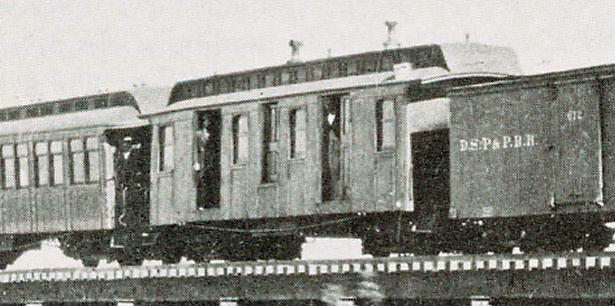
Unidentified "Plan 73" Pullman Palace Sleeping car (far
left) with baggage
car #40, #41 or #45, on bridge over Arkansas River near Buena Vista,
early 1880s.
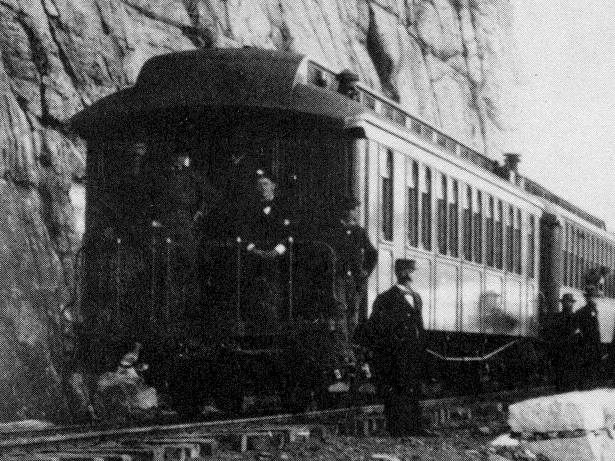
Hortense or Kenosha in 1885. Note fancy paneling and single window
at each end.

The car on the left is the "South
Park" during its short (1892-1894) stint as UPD&G coach #176. It has
the characteristic twin “stacks”
evident in the 1895 photo of it as UPD&G business car #1. The
car second from left must be one of the other two plan 73 Pullmans,
Bonanza or Leadville, during their short careers as coaches #177 and
#179.
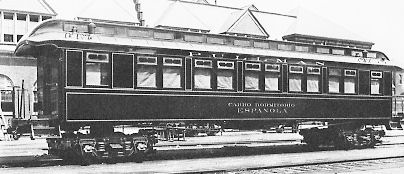
Similar to Hortense or Kenosha, D&RG "Española" was reassigned to
the Mexican Interoceanic RR in 1900, and may represent how they
looked in their new livery.
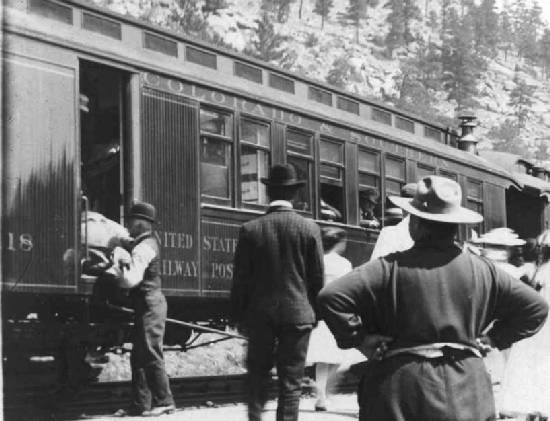
C&S coach-mail #118 (ex Pullman Leadville) at Buffalo, probably
between 1906 and 1910.
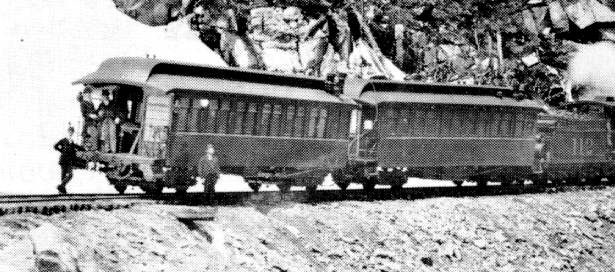
Union Pacific, Denver & Gulf Business car #1 (left) and Denver,
Leadville & Gunnison Business car #2 (right)
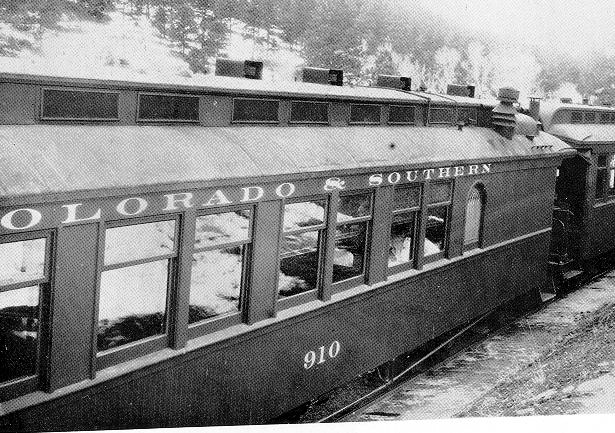
Right side of C&S Business Car #910 in its last year, 1929.
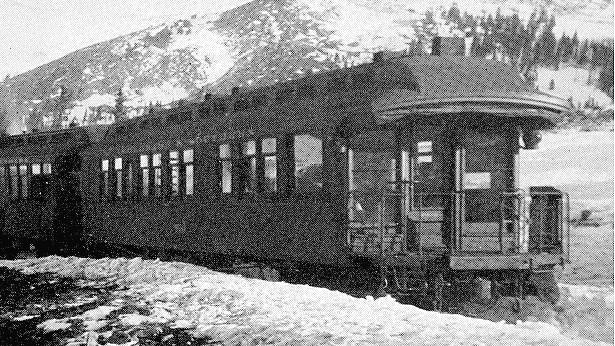
Left side of same special train consisting of C&S business cars #911
and #910.
 FOLIOS and PLANS FOLIOS and PLANS
Pullman Palace Sleeping Car
"South Park" as delivered to DSP&P in 1879
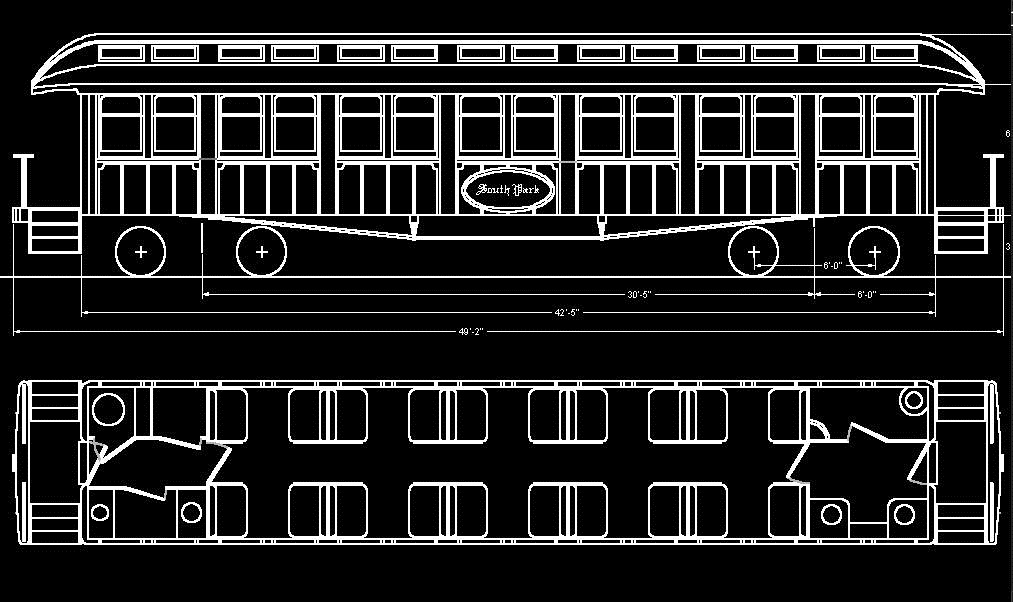
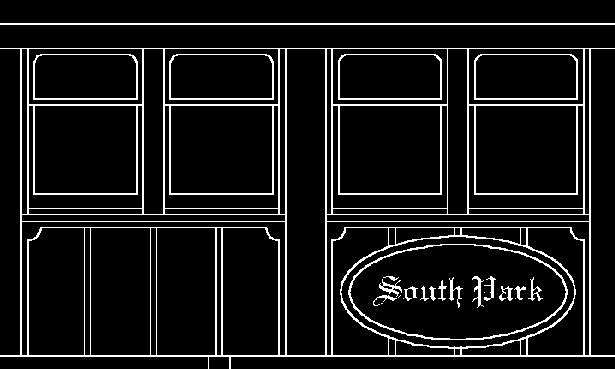
Illustration of paneling on sides of South Park and other plan 73
Pullman Palace sleeping cars. Paneling would generally be ½" to ¾"
thick with decorative “battens” 3/8" to ½" thick. It was prone to
warping no matter how many coats of varnish it got. In a
relatively short time, it was overlain with the more utilitarian
tongue-and-groove.
DSP&P Pullman Sleepers
"Bonanza", "San Juan", "Leadville"
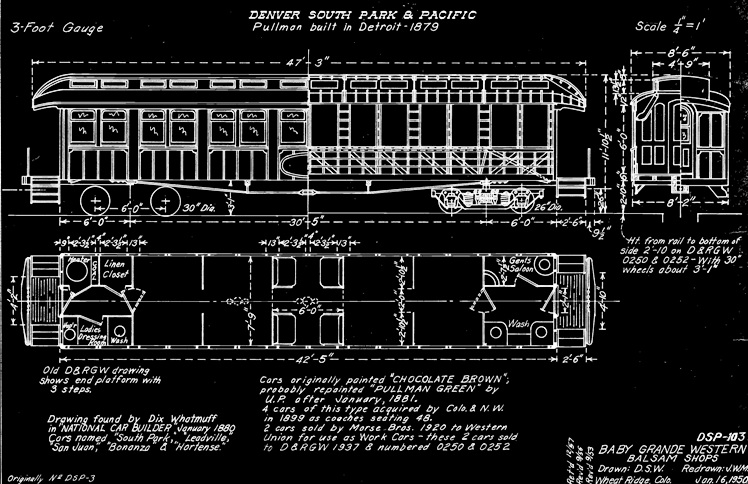
DSP&P Pullman Palace Sleepers
after conversion to C&S 40 -- 43 Combine-RPO (1906)
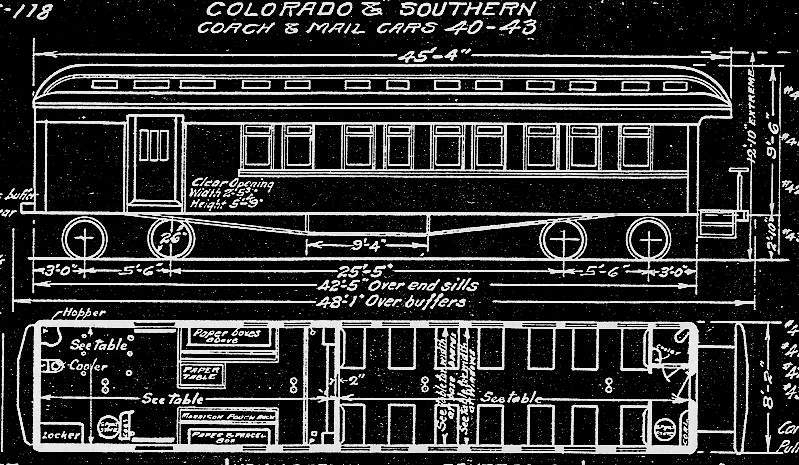
|













